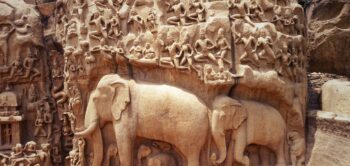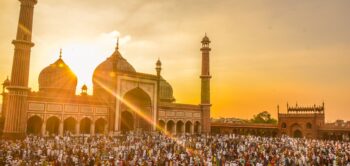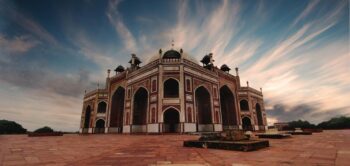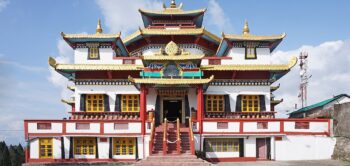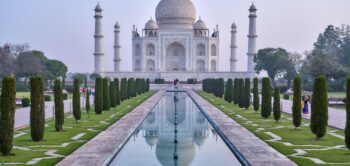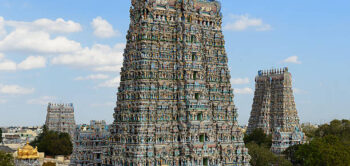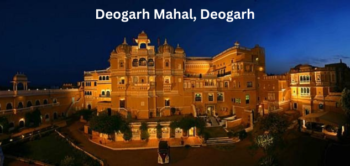Holidays
India Tour Packages – Discover The Enchantment
Discover India’s Diverse Landscapes and Cultures
India is an incredibly beautiful and diverse country that has charmed travellers for centuries. From snow-clad mountains in the northern Himalayas, which offer excellent skiing opportunities, to the stunning beaches of the southern tip bordering the Arabian Sea, India offers some of Asia’s most unique and picturesque landscapes.

The long coastline along the Indian Ocean and Bay of Bengal presents some of the finest stretches of sandy beaches and golden sands. From the quiet palm-fringed backwaters of Kerala and the tropical rainforests of the Western Ghats to the extensive mangrove forests of Sunder bans, India’s fertile land shelters a huge variety of wildlife and resources. From sapphire forests of the Northeast to the lush green valleys of Himachal Pradesh, India’s diverse landscapes and nature are a treat to view.
India is an incredible melting pot of culture, where different communities from different parts of the country have a unique regional identity. Its cuisines, festivals, music, art forms, languages, customs and clothing are celebrated with joy and enthusiasm. India is the birthplace of spiritual masters, languages and literature, music, dance, and philosophy. Its many ancient architectural marvels, such as the Taj Mahal in Agra, The Golden Temple in Amritsar, The Meenakshi Temple in Madurai, The Konark Sun Temple in Odisha, etc are considered to be among the finest monuments in the world.
-
12 Day Flight-Only Package to South India
£ 627 – £ 744 -
Cheap flights to India: Delhi 14-Day Flight-Only Package
£ 561 – £ 738 -
Flight Booking India: India, 14-Day Flight-only Package
£ 550 – £ 831
India is also home to a number of national parks, wildlife sanctuaries, and bird sanctuaries that provide for the perfect opportunity to have a close encounter with the wildlife.
Top Sights to Visit for your tour to India
Here are ten of the top sights to visit for your tour of India.
- Taj Mahal: This magnificent 17th century mausoleum is one of the most recognizable sites in India. The Taj Mahal was constructed by Emperor Shah Jahan in memory of his beloved wife Mumtaz Mahal, and its grandeur and beauty capture the heart and imagination of all who visit.
- Red Fort, Delhi: Sitting atop Delhi’s highest hill, this imposing fort was the home of India’s Mughal emperor for more than 200 years. Today, it still stands as a historical reminder of India’s imperial past, and visitors can marvel at the palace’s stunning architecture and intricate decoration.
- Amber Fort, Jaipur: This fortress-palace complex showcases the best of Rajasthani architecture, combining intricate paintings, mirrored walls, and elaborate latticework. Tourists will be stunned by its scale, detail, and brightly coloured domes and turrets.
- The Himalyas: India’s huge mountain range is a must-see for any traveler. Himalayan peaks such as the Nanda Devi offer breathtaking views, and one can even take part in adventurous activities like trekking and mountaineering.
- Golden Temple, Amritsar: This beautiful and holy temple is a symbol of the Sikhs’ faith and strength. Visitors can witness traditional ceremonies such as the daily flag-lowering, sample delicious Langar food, and take a peaceful stroll around the edge of the temple pool.
- Kerala Backwaters: These scenic canals and lagoons offer a tranquil experience and make for an unforgettable boat ride. Visitors can take part in activities such as fishing, bird watching, and exploring villages alongside the waterways.
- Qutub Minar, New Delhi: This imposing stone tower began construction in 1192 and measures a staggering 72 meters in height. The tower is a significant landmark of the Capital and is surrounded by many other historic sites.
- Thar Desert, Rajasthan: This desert region of India offers visitors a unique glimpse into traditional India life. Dune bashing, camel rides, and cultural performances in desert camps are just some of the activities available here.
- Nalanda University, Bihar: Founded in the 5th century, this university is over two millenia old, making it one of the world’s earliest educational institutions. Stroll through the ruins and soak up the atmosphere of one of India’s ancient centres of learning.
- Ellora Caves, Maharashtra: Carved out of the rocky Charanandri hills, these 34 palatial structures were created way back in the 8th century. From Hindu temples to Buddhist monasteries and educational centres, this site allows visitors to explore India’s wide-reaching religious diversity.
India is home to many magical and exquisite sites, and these are just some of the most renowned. Whether you are looking for cultural heritage sites, beach escapes, or desert adventures, India has something for every traveller.
Cultural Experiences and Heritages in India
One of the most captivating aspects of India is its variety of cultures, which have been carefully crafted over centuries to create a rich heritage and identity of its own. Every region has something unique to offer and its culture is celebrated with enthusiasm. From traditional Hindu and Muslim weddings to the vibrant culture of Konkan, from the vibrant markets of Dilli Haat to the gold-filled temples of Tamil Nadu, the array of cultural experiences in India is truly fascinating.

India is also renowned for its magical festivals, which are celebrated throughout the year. From incredible firework displays during Diwali to Kites flying high during the International Kite Festival, from Holi splashed in colour to the holy Ganga Aarti, the celebration is a true reflection of India’s rich and vibrant culture. There are a few staple events that are part of Indians everyday life such as weddings, festivals, religious ceremonies, and even national festivals like Republic Day or Independence Day.
India is also home to some of the most fascinating historical sites and monuments. From the Great Wall of India to the Taj Mahal, and from the tombs of Fatehpur Sikri to the holy city of Varanasi, these monuments represent a vital part of India’s history, culture, and heritage. Not only are they amazing to see, but these monuments tell the story of India’s past and its unique culture.
India also boasts of a rich culinary heritage. With regional India dishes spiced with regional flavours, it offers a delectable variety of dishes. From the traditional South Indian idli-dosa to the spicy Biryani of Punjab and modern Indian westernized dishes, the cuisine of India is as vast and varied as its culture.
Dishes to try on your tour in India
Whether you’re exploring the bustling streets of Delhi or trekking through the breath-taking Himalayas, here are some must-try dishes on your tour in India.

Samosa: This dish is a classic snack that can be found in almost any city across the country. A deep-fried pastry filled with a tasty blend of spices and meats, the samosa is an essential dish during your tour in India.
Daal Makhani: This creamy, flavourful dish is made with black lentils, black beans, herbs, tomatoes, and butter. A meal complete in itself, Daal Makhani is best served with fresh naan or hot jasmine rice.
Gulab Jamun: This delectable, sweet pastry is made with tender dough, deep fried, and mixed with cardamom, saffron, and other spices. It is then dipped in a sweet syrup made with sugar, water, and rose water to form a unique flavour.
Biryani: A favourite across the entire subcontinent, biryani is a layered rice dish that is prepared with spices, vegetables, and meats. Whether you’re in Delhi or Mumbai, you must try this delicious dish during your tour in India.
Chaat: This quintessential Indian snack is made with a tasty combination of deep-fried potatoes, chutneys, and tamarind. Whether it’s pani puri, sev puri, paapdi, or bhel puri, chaat is a must-try dish if you’re looking to sample a wide range of flavours.
Masala Dosa: Found in both street stalls and restaurants, this popular dish is made with a rice-lentil batter that is spread into a thin layer and cooked till crisp. It is served with a delicious potato filling and a variety of chutneys.
Butter Chicken: This delectable dish is a favourite among locals and tourists alike. A creamy tomato-based sauce infused with cardamom, cinnamon, and butter, the dish is served with ricer or naan for a truly unique and flavourful experience.
Tandoori Chicken: This dish is a must-try on your tour in India. The juicy chicken is marinated in yogurt and spices and then cooked in a tandoor oven, resulting in a flavourful and tender dish served with an array of accompaniments.
These are just a few of the many dishes you should explore during your tour in India.
Customise Your India Tour Package – Explore Our Wide Range of Creative Tour Styles and Unique Experiences
If you are looking for the best of both worlds, customized India Tour packages provide a perfect blend of cultural exploration and sightseeing. Tourists can explore the fascinating sights and culture of India with our tour styles specially designed to cover the most important and memorable sites of India. Our tour packages provide an exquisite combination of must-see attractions and experiences such as visiting the Taj Mahal, exploring the backcountry of Rajasthan, going tiger spotting at Bandhavgarh National Park, enjoying the spectacular view of Kashmir from the famous Gulmarg and more. Adding to the charm of the country, you can also enjoy a range of cultural activities such as attending classical theatre performances, shopping in local bazaars and mingling with the locals of India.
Moreover, tourists can make the most of their India Tours by customizing their package according to their interests. We provide unique experiences such as the “Haveli Trail” and “Taste of India” Tours for visitors who want a more authentic and local experience of India. In addition, we offer unique tour packages that focus on art, heritage, gastronomy, off-beaten and luxury experiences which will have you exploring the hidden gems in India. Tourists can also indulge in adventure sports like rafting, trekking, paragliding, and skiing while they traverse through the beautiful locales of India.
Cultural Immersion and Classic Heritage Tours to India
Classic Heritage Tours are the closest ‘taste’ of the ancient and colourful aspects of India. These tours typically include visits to historically important cities and temples, museums, palaces, and more. They offer tourists the chance to explore the magnificence and intricacies of the Indian landscape, taking in all the beautiful architecture, flora, and fauna, and experiencing the local culture first-hand.

On this tour, tourists may explore the majestic Taj Mahal in Agra, the spiritual Ajanta & Ellora caves in Maharashtra, or the religious temples of Khajuraho. These tours also include visits to the tribal villages, where visitors can learn more about the culture and history of the locals.
Cultural Immersion Tours offer tourists the opportunity to truly get to know and understand India and its people in a more meaningful way. These tours are usually much more hands-on than other types of tours, allowing travellers the chance to experience the day-to-day activities of Indian life first-hand. On these tours, visitors may have the chance to participate in local crafts and activities such as cooking, pottery, gardening, and even weaving. Tourists can also explore the vibrant bazaars for local spices, jewellery, and art, and sample the unique and flavourful cuisine of India.
Whichever type of tour you choose, a visit to India is sure to be an unforgettable experience.
India Tour Packages for Nature Enthusiasts
Here are just a few of the many experiences you can have in India as a nature enthusiast.

Experience the Wildlife:
India is home to over 500 wildlife sanctuaries and several national parks. These locations are home to a variety of rare and endemic species of both flora and fauna. Some of the places you can visit are the Corbett National Park, Kaziranga National Park in Assam or Gir Forest in Gujarat. All of these provide an excellent opportunity for wildlife viewing as they are some of the last wilderness havens of India.
Explore the Hills:
The forests and hills of India are paradise for nature lovers. The Himalayan range has several trekking trails which range from easy to challenging and offer an opportunity to explore the rich biodiversity of the region. You can easily go for an overnight trek or a four-to-five-day long trek and enjoy the stunning snow-capped peaks of the Himalayas.
Explore the Beaches:
India is filled with an abundance of beautiful beaches that offer pristine views of the ocean. These places can provide a perfect getaway for nature enthusiasts and give an opportunity to observe marine life up close. From dolphins making appearances at the shores to the much-endangered olive ridley turtles coming ashore to lay eggs, these beaches offer an ideal opportunity to experience nature first-hand.
Go Bird Watching:
India is a great place for bird watching enthusiasts due to its variety of avian species. Many regions have wetlands and rivers that are home to countless species of migratory birds. The Kolleru Lake in Andhra Pradesh is one of the largest freshwater lakes and a popular destination for bird watchers. There are also several bird sanctuaries in India like the Keoladeo National Park in Rajasthan.
From an abundance of birding sites to the picturesque beaches, India is a paradise for nature lovers.
Adventure-Packed India Tour Packages
Adventure-packed India tours are becoming increasingly popular among travellers, allowing them to explore some of the most exotic and challenging adventure destinations in the world.

For fans of trekking, India is a mountain paradise. The vast Himalayan range stretches from India’s northern borders to the northwest and provides challenging terrains like the formidable Kanchenjunga. For snow-lovers, there are numerous treks to choose from in the northern states. The Markha Valley Trek is a great choice, while the popular Chadar Trek on the frozen river Zanskar is a unique experience. For music and culture lovers, the verdant forests of Kerala are ideal for jungle treks and camping.
India is also home to some of the world’s best water sports activities. Goa is an obvious choice with its beautiful beaches and thrilling water sports like parasailing, river rafting, kite-surfing and snorkelling. In the extreme south, Kerala is known as the ‘God’s Own Country’ for its backwaters, coastline and unique climate. Here, travellers can explore the lush backwaters of the Vembanad lake or enjoy Whitewater kayaking and canoeing in the backwaters.
Other exciting activities can be found in the snow-clad Dehradun and Manali where travellers can try their hand at skiing with the help of experienced instructors. India is also home to some of the world’s best rock climbing and mountaineering locations. The top locations in India for these activities are the Manali-Kullu Valley and the Darjeeling-Sikkim region.
Finally, for those who want to truly challenge themselves, there is sand dune bashing in Rajasthan, bungee jumping in Goa and hill climbing in the Sahyadris.
India Tour Packages for Food Lovers
From north to south and east to west, India offers an array of tantalizing dishes that are sure to pleasure the taste buds of any globetrotter.

The distinctive flavours of Indian cuisine come from a combination of spices and ingredients that have been used for centuries, and the flavours of each region vary significantly, depending on the climate and local ingredients available. Northern India has rich, creamy curries made from whole spices such as cinnamon, cardamom, clove and cumin. Dishes usually include pulses and vegetables such as peas, potatoes, spinach and okra. In the south, dishes tend to be milder and cooked with ground spices such as turmeric, coriander and red chili powder, as well as distinct coconut flavours.
Food in India is eaten using the hands, so for a truly traditional dining experience, there are plenty of street-food vendors to explore. Delhi’s Chandi Chowk is one of the oldest and most famous markets, serving up delicious chaats–or savoury snacks–such as samosas and pakoras. In Tamil Nadu, the classic breakfast dish of idly-vada is a must-try. In Goa, seafood lovers can enjoy traditional dishes such as Goan prawn curry, or the classic fish thali plate.
India is known for its variety of sweets. From traditional desserts such as rasgulla, jalebi and gulab jamun to regional specialties like halwa and modak, there is something for everyone. In Gujarat, the traditional dish of shrikhand is particularly popular–it is a creamy, sweet dish made from dahi (yogurt) and honey.
In conclusion, India is a paradise for food lovers of all cultures. Its rich variety of dishes, flavours and regional specialties make it the perfect destination for anyone looking to discover new tastes and experience delicious food.
Family-Friendly India Vacation Packages
From wildlife spotting to culture-rich experiences, there’s a great selection of family-friendly activities available to families and groups of all sizes throughout the entire country.

Visiting India’s Wildlife Parks
Seeing India’s wildlife is an unforgettable experience that the whole family will enjoy. There are a variety of national parks and wildlife reserves throughout India, offering visitors an expansive range of wild animals to observe including Bengal tigers, Asiatic lions, elephants, and rhinos. Most parks also offer safari tours, providing an up close and personal experience with India’s exotic wildlife.
Exploring India by Boat
Taking a leisurely ride along India’s rivers is a great way to observe India’s beauty from an entirely different perspective. Houseboat journeys typically take place overnight, so you can overnight in the boat and have an opportunity to explore small towns along the riverside.
Soaking up India’s Culture
India has a fascinating and unique culture that is sure to blow your family away. From the vibrant colours of its clothing to its ancient cities and monuments, India’s rich culture can be experienced in many ways. Sign up for a guided tour of India’s famous heritage sites, like the Taj Mahal or the Golden Temple, or take a cooking class and discover the region’s distinctive flavours.
Visiting India’s Beaches
Resorts located along India’s picturesque beaches are an excellent location for families who want to have a break from the hustle and bustle of city life. Enjoy some downtime by the beach, play in the sand, or relax in the sun. Wave-filled waters make for great swimming and plenty of fun, from jet skiing to boating.
Trekking Through India’s Mountains
India is also a great place for mountains trekking. Experienced trekkers can join any of the nation’s organized treks, or more adventurous families may choose to go on their own. With its breath-taking terrains, stunning views, and untouched beauty, trekking through the mountains of India is a unique and memorable experience that everyone in the family will enjoy.
Romantic Getaways: India Honeymoon Packages
from the exotic beaches of Goa to the enchanting hill stations of the Himalayas, India has a range of romantic getaway packages to make your honeymoon truly memorable.

For couples who are seeking a secluded beach getaway, Goa is an ideal destination in India. With its gorgeous beaches, sunny weather and lively nightlife, it’s no surprise that Goa has become a popular honeymoon destination for couples. Goa has plenty of romantic packages you can find that include luxurious beach bungalows, cruises and water sports. You can also explore the beautiful churches, Casinos and beautiful Portuguese architecture that dot the coastline.
For a more tranquil romantic honeymoon, the Himalayas offer many breath-taking destinations. Couples can find romantic getaway packages that include stays in luxurious hill resorts, sightseeing tours and relaxing spa treatments. The stunning mountain scenery can be enjoyed while on romantic strolls, hikes and cable car rides.
The romantic getaway packages in India can also include charming stays in some of the country’s major cities. Agra is home to the beautiful Taj Mahal, while Jaipur is known for its unique palaces and forts. These cities offer romantic packages that include sightseeing trips to places such as The Taj Mahal, Hawa Mahal and Amer Fort. Moreover, travellers can enjoy traditional Indian cuisine, entertainment shows and night markets.
When it comes to couples who want to experience the rich culture and heritage of India, there are many romantic packages that include tours to the ancient temples, mosques and forts of the country. Couples can also explore villages and explore the local culture and way of life.
India Beach Resort Packages for Sun Sand Sea Holidays
One of the most popular Indian beach destinations is Goa. With its balmy temperatures, white sand beaches and lively nightclubs, Goa is a mecca for sun seekers and party-goers alike. The bustling town of Calangute beach is a great place to start with its lively markets selling everything from beautiful fabrics to handmade jewellery. Nightlife in Goa has something for everyone – from beachfront bars and nightclubs to former Portuguese colonial villas and seafood eateries.
For a more secluded yet equally enjoyable beach holiday, head south to Kerala. This sun-soaked state’s palm-fringed beaches and tranquil backwaters make it one of the most beautiful and truly special holiday destinations in India. Here you can relax on white sand beaches, take boat rides along the picturesque rivers and explore idyllic villages. Visit Lakshadweep, a stunning cluster of 36 coral islands situated off the coast of Kerala and experience the perfect blend of peace and relaxation – perfect for divers, snorkelers and those who just want some peace in the company of nature.
If an island escape is more your thing, then don’t look further than the Andaman Islands. Located at the far reaches of India’s Bay of Bengal, this little-known spot is fast becoming a favourite destination among holidaymakers. Here you can soak up the sun on some of the country’s most beautiful beaches, discover hidden reefs and fiery volcanoes and explore dense jungle and stunning wildlife.
Whichever Indian beach or island you choose, you’re sure to have an unforgettable holiday.
Bespoke and Small-Group Vacations to explore India art, craft, architectural and photography tours in India
Although traditional tours can be great for getting to know India’s attractions, nothing quite beats an intimate and tailored experience. That’s why more and more people are now turning to bespoke and small-group tours in India to get the most out of their sightseeing.

Bespoke tours allow you to discover India through a completely personalised itinerary tailored to suit your individual interests and requirements. From visiting ancient monuments such as the Taj Mahal, to discovering the markets of Delhi through a local lens, to venturing out to India’s more remote regions, your journey can be as unique and specialised as you wish. You can explore a variety of cultural experiences, from story-telling with a local guide to trying out traditional art forms like thangka painting.
Small-group tours are also a great way to enjoy India’s culture. Whether it’s a photography tour of religious sites in Rajasthan, a craft tour of the Silk Road in Gujarat, or a street art tour of Mumbai, there’s something for everyone. Often, you’ll be accompanied by an expert guide to ensure an informative and hands-on experience. And since these tours are generally limited to small groups, you’ll also get plenty of time for personal reflection too.
Furthermore, India is home to some magnificent architectural gems, from the iconic Red Fort in Delhi to the magnificent Jain temples of Humayun’s Tomb. You’ll have the chance to explore some of the country’s most impressive new and old monuments on these tours—from the exquisite colonial-style buildings of Chennai and the vibrant houses of Mysore to the grand fortresses of the desert regions.
Navigating your Adventure Through India: Essential Tips
Visa, Passport, and Entry Requirements: Preparing for your Trip to India
Since visa requirements can vary greatly depending on the country, it is important to know the specific details for obtaining a visa to enter India. In general, anyone who wishes to travel to India for tourism, business, or visiting family and friends will need to obtain a visa prior to their arrival. The first step is to determine which type of visa is required for the intended purpose of the trip. India offers a variety of visas such as tourist visas, business visas, conference visas, employment visas, and student visas.
For travellers from the UK, a visa is a necessary requirement for traveling to India, unless you possess an Overseas Citizen of India (OCI) card. India offers various visa categories, therefore it is important to obtain the correct one based on your purpose and length of stay. Visas can include tourist, student, business. Failure to obtain a visa may result in penalties such as denial of entry or deportation, potentially preventing future visits to India.
A Tourist Visa is granted to individuals from foreign countries who do not have a permanent residence or occupation in India and whose primary reason for visiting is for leisure activities, sightseeing, casual visits to friends and family, and other similar purposes. More information around visa requirements can be found on the official Gov.UK website. If your stay in India is expected to exceed 180 days and you do not have an OCI card, it is mandatory to register within 14 days of your arrival.
Currently, there are no India COVID-19 entry requirements. UK visitors must ensure that passports are valid for a minimum of 6 months upon arrival in India. Additionally, passports should have 2 empty pages available for your visa. India has stringent regulations regarding the import and export of goods. It is mandatory to declare any items that fall under the category of prohibited or taxable goods.
Please note, these are the current entry requirements for India, which may be subject to change.
Currency, Exchange Rates, and Banking in India
The Indian currency is the Indian Rupee (INR). The process of exchanging foreign currency in India can vary depending on the location. Commercial Indian banks are one option, but you can also find money changers in local market neighbourhoods in major cities. Additionally, airports offer this service for the convenience of travellers. It is advisable to exchange your currency at authorised foreign exchange dealers or banks. Avoid exchanging money at unauthorised dealers, as they may offer unfavourable exchange rates.
One of the most critical aspects of exchanging money in India is to keep an eye on the current exchange rates. The rates may vary from day to day, and it is vital to monitor them closely to get the best deal. It is also advisable to exchange small amounts at a time rather than exchanging a large sum of money at once. This way, you can keep track of the exchange rates and not lose too much money in case of unfavourable rates.
Another tip to keep in mind is to carry cash in small denominations, preferably in the form of 100 or 500 rupee notes. Many places in India, especially smaller towns and villages, might not accept larger notes, and it can be challenging to get change. Additionally, it is always a good idea to have some cash on hand for smaller vendors or places that do not accept cards.
It is also essential to inform your bank before traveling to India to avoid any issues with your debit or credit cards. Some banks may put a hold on your card if they see transactions coming from a foreign country that you haven’t notified them about.
Travel Insurance While Heading to India
Travel insurance in India is important for several reasons:
Medical Emergencies: Travel insurance provides coverage for medical emergencies that may arise during your trip, including hospitalisation, medical treatment, and emergency evacuation. This is particularly crucial when traveling to countries with high healthcare costs, where even a minor medical issue can result in significant expenses.
Trip Cancellation/Interruption: Travel plans can sometimes be disrupted due to unforeseen circumstances such as illness, natural disasters, or political unrest. Travel insurance can reimburse you for non-refundable trip costs if you need to cancel or cut short your trip due to such events.
Loss or Theft of Belongings: Travel insurance typically covers loss, theft, or damage to personal belongings such as luggage, passports, and valuables. This provides peace of mind knowing that you will be compensated for any losses incurred during your trip.
Flight Delays/Cancellations: Travel insurance often includes coverage for flight delays, cancellations, or missed connections, reimbursing you for additional expenses incurred as a result, such as accommodation and meals.
Personal Liability: In the unfortunate event that you accidentally cause injury to someone or damage their property during your trip, travel insurance can provide coverage for legal expenses and compensation payments.
You can consider providers such as AXA, World Nomads, and the Post Office.
Health and Vaccinations in India
Travellers planning to visit from the UK are advised to ensure that they are up to date with their routine vaccination courses and boosters. This includes important vaccinations such as the measles-mumps-rubella (MMR) vaccine, as well as the diphtheria-tetanus-polio vaccine.. Additionally, those at a higher risk of contracting infectious diseases due to their occupation, lifestyle choices, or underlying health conditions should also ensure that they are up to date with any other recommended vaccines.
For most travellers, it is recommended that you receive Hepatitis A, Tetanus, and Typhoid,
Safety and Security in India
One of the biggest safety concerns in India is transportation. The roads in India can be chaotic, with heavy traffic and a lack of adherence to traffic rules. It is advisable to use licensed and reputable transportation options, such as app-based cabs or trusted local drivers. Avoid travelling alone at night, especially in remote areas, and always inform someone of your travel plans. It is also important to be cautious when using public transportation, such as buses and trains, as pickpocketing and theft can occur in crowded spaces.
In terms of personal safety, it is always wise to be aware of your surroundings and trust your instincts. Avoid wandering into unfamiliar or poorly lit areas, especially at night. In crowded places like markets and tourist attractions, keep an eye on your belongings and be cautious of any suspicious behaviour. Women should also be mindful of their clothing. It is recommended to dress modestly, especially when visiting religious sites.
Another safety concern in India is the prevalence of scams and touts. Be wary of anyone offering unsolicited help or trying to sell you something at a very low price. These are often tactics used by scammers to cheat unsuspecting tourists. It is best to do thorough research and book activities and tours through reputable and licensed providers.
Emergency Contact Numbers while in India
If you’re in India and you need urgent help, you should call +91 11 2419 2100. You can also phone 112 for the ambulance, fire, or police service.
Language and Communication Tips for Visiting India
Learn Basic Hindi Phrases: While English is widely spoken and understood in urban areas and tourist destinations, learning some basic Hindi phrases can be helpful, especially in more rural areas. Phrases like “Namaste” (Hello), “Dhanyavad” (Thank you), and “Kripya” (Please) can go a long way in showing respect and making connections with locals.
Use Simple English: When communicating in English, especially with people who may not be fluent, try to use simple and straightforward language. Avoid using slang, idioms, or complex vocabulary that may be difficult for non-native speakers to understand.
Non-Verbal Communication: Non-verbal communication, such as gestures and body language, can play a significant role in interactions in India. Be mindful of your gestures and facial expressions, as they may have different meanings in Indian culture. For example, nodding your head from side to side can mean both “yes” and “no” depending on the context.
Transportation Options in India
India offers a diverse range of transportation options to cater to the varying needs and preferences of travellers. Here’s an overview of the transportation options available in India:
Railways: Indian Railways is one of the largest rail networks in the world, connecting almost every corner of the country. It offers a range of train classes from luxurious to budget-friendly options, including the iconic Palace on Wheels and the budget-friendly Sleeper Class. Reservations can be made online through the Indian Railways website or at railway stations.
Roadways: India has an extensive network of roads and highways, making road travel a popular choice for both short and long distances. Public buses operated by state governments and private companies provide affordable transportation between cities and towns. Taxis, auto-rickshaws, and cycle-rickshaws are widely available for local transportation within cities and towns. App-based ride-hailing services like Uber and Ola operate in major cities, providing convenient and reliable transportation options.
Airways: India has a well-developed domestic air travel network, with numerous airlines offering flights between major cities and regional destinations. Domestic airlines include Air India, IndiGo, SpiceJet, Vistara, GoAir, and others. Air travel is the fastest way to cover long distances within India, but it can be relatively more expensive compared to other modes of transportation.
Metro Rail: Several major cities in India, including Delhi, Mumbai, Kolkata, Chennai, Bengaluru, and Hyderabad, have metro rail systems. Metro trains offer a fast, efficient, and comfortable mode of transportation for commuting within these cities. Metro rail networks are continuously expanding to cover more areas and reduce congestion on roads.
Ferries and Boats: In coastal areas and regions with water bodies like rivers and lakes, ferries and boats are commonly used for transportation. They provide connectivity between islands, coastal towns, and remote riverine areas. Popular ferry routes include services between mainland India and the Andaman and Nicobar Islands, as well as ferry rides on the backwaters of Kerala.
Tourist Transport: In tourist destinations, various options such as sightseeing buses, camel safaris, elephant rides, and horse-drawn carriages are available to cater to travellers’ interests and preferences.
Accommodation Options – Where to Stay in India?
India offers a wide range of accommodation options to suit every budget, preference, and travel style. Here are some popular types of accommodation available in India:
Hotels: India has a vast selection of hotels ranging from budget to luxury properties.
Guesthouses and Homestays: Guesthouses and homestays offer a more intimate and authentic experience, allowing travellers to stay with local families or hosts. These accommodations are often more affordable than hotels and provide an opportunity to experience local culture and hospitality firsthand.
Hostels: Hostels are a popular choice for budget-conscious travellers, solo travellers, and backpackers. They offer dormitory-style accommodations with shared facilities such as bathrooms, kitchens, and common areas.
Boutique and Heritage Hotels: Boutique hotels are smaller, independently-owned properties that offer unique design, décor, and personalized service. Heritage hotels are often former palaces, forts, or mansions that have been converted into luxury accommodations while retaining their historical charm and architecture.
Resorts: India boasts a plethora of beach resorts, hill resorts, and spa resorts catering to leisure travellers seeking relaxation and rejuvenation. Resorts typically offer upscale accommodations, recreational facilities, dining options, and wellness services in scenic surroundings.
Treehouses, Eco-Lodges, and Glamping Sites: For travellers seeking unique and eco-friendly accommodations, India offers options such as treehouses, eco-lodges, and glamping sites. These accommodations provide a close-to-nature experience amidst forests, wildlife sanctuaries, or rural landscapes, with minimal environmental impact.
Local Transportation Apps in India
India has a thriving market for local transportation apps, offering convenient and efficient solutions for navigating within cities and towns. Here are some popular local transportation apps in India:
Uber: Uber operates in major cities across India, offering ride-hailing services for taxis, auto-rickshaws (known as ‘tuk-tuks’ in some regions), and two-wheelers. Users can book rides, track drivers in real-time, and pay through the app.
Ola: Ola is one of the largest ride-hailing companies in India, providing services similar to Uber, including taxi, auto-rickshaw, and two-wheeler rides. Ola also offers options for outstation travel, bike rentals, and shuttle services.
Rapido: Rapido specializes in bike-taxi services, allowing users to book rides on motorbikes for quick and affordable transportation within cities. The app offers real-time tracking, upfront pricing, and safety features for riders.
Zoomcar: Zoomcar is a self-drive car rental service that operates in several cities across India. Users can book cars through the app, pick them up from designated locations, and return them after use. Zoomcar offers a variety of vehicles, including hatchbacks, sedans, SUVs, and luxury cars.
Weather and Climate in India
The country experiences six main seasons throughout the year, namely winter, summer, monsoon, autumn, spring, and pre-monsoon. The winter season usually starts in December and lasts till February, with temperatures dropping to as low as -20 degrees Celsius in some parts of the country. The northern states and mountainous regions, such as Kashmir and Himachal Pradesh, experience heavy snowfall during this period, making it a popular tourist destination.
Summer season in India starts in March and lasts till June, with temperatures soaring to as high as 50 degrees Celsius in some states. The northern and central regions of India, including Delhi and Rajasthan, experience scorching heat during this time, making it challenging to go out in the daytime. However, the southern coastal regions, such as Kerala and Goa, experience a relatively moderate climate during summers, making it an ideal time to visit these places.
The monsoon season in India is a crucial season for the country’s agriculture, as it brings much-needed rainfall to the parched lands. The monsoon starts in June and lasts till September, with heavy rainfall in most parts of the country. The eastern and western coastal regions, including Mumbai and Kolkata, experience heavy downpours during this season, leading to waterlogging and floods in some areas. However, the monsoon also brings respite from the scorching heat, and the country’s natural beauty is at its peak during this season.
The autumn season in India is short-lived and usually lasts from October to November. The temperatures start to drop during this time, leading to pleasant weather in most parts of the country. It is also the festive season in India, with celebrations of Diwali and Dussehra taking place during this time.
The pre-monsoon season, also known as the spring season, begins in February and lasts until the onset of the monsoon. The temperatures are pleasant, and the flowers and trees start to bloom, making it a picturesque time in India. The famous festival of colours, Holi, also takes place during this season, making it a vibrant and joyful time.
Packing Essentials for your Trip to India
The weather in India varies greatly, from hot and humid in the south to cold and dry in the north, so it is important to pack clothing that is appropriate for the specific regions you plan to visit. Cotton, lightweight fabrics are highly recommended to combat the heat, while warmer options like sweaters and jackets should be included for cooler areas. It is also important to pack modest clothing, as India is a conservative country and locals will appreciate respectful attire.
Another essential item to pack for a trip to India is a good pair of comfortable, closed-toe shoes. With the crowded streets and uneven terrain, you will want shoes that provide support and can withstand a lot of walking. A pair of sandals or flip flops can also come in handy for visiting temples or other sacred sites where shoes must be removed.
In addition to clothing and shoes, there are a few other items that should not be overlooked. A travel adapter is an absolute must, as the voltage and outlets in India may differ from what you are used to. It is also wise to bring a first aid kit, as well as any necessary medications you may need. And of course, do not forget to pack sunscreen, insect repellent, and a hat to protect yourself from the strong sun and potential mosquito bites.
For the tech-savvy traveller, a power bank to charge your devices on the go is a great investment. India is a country with a rapidly growing technology scene, so you may also want to pack a camera to capture the vibrant sights and experiences. However, be aware of local customs and ask for permission before taking photos, particularly of people.
Voltage, Power Outlets, WIFI and Internet in India
The standard voltage in India is 230 volts, with a frequency of 50 hertz. However, it is important to note that there are still many remote and rural areas in India that do not have access to a reliable power supply, highlighting the ongoing challenge for the country to ensure universal electricity access.
In terms of power outlets, India primarily uses the Type C and Type D sockets, which are also known as the ‘Europlug’ and ‘Indian plug’ respectively.
With the increasing popularity and demand for technology and internet connectivity, India has also seen a significant growth in its WIFI and internet infrastructure. Major cities like Mumbai, Delhi, and Bangalore have become hubs for technology and start-ups, with a strong emphasis on providing high-speed internet and WIFI access. Private companies and the government have invested heavily in building and expanding the country’s internet infrastructure, resulting in an increase in internet penetration and access.

